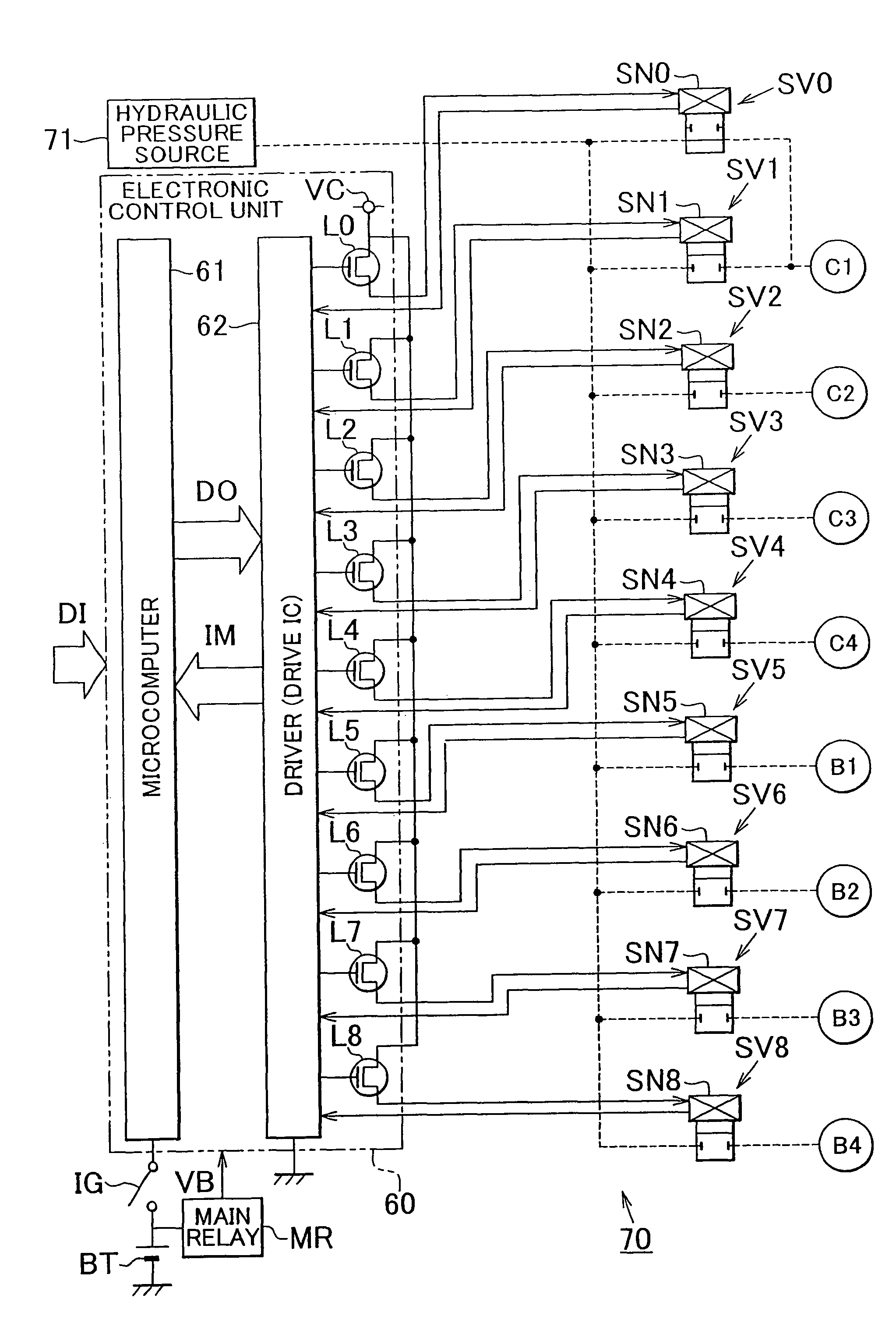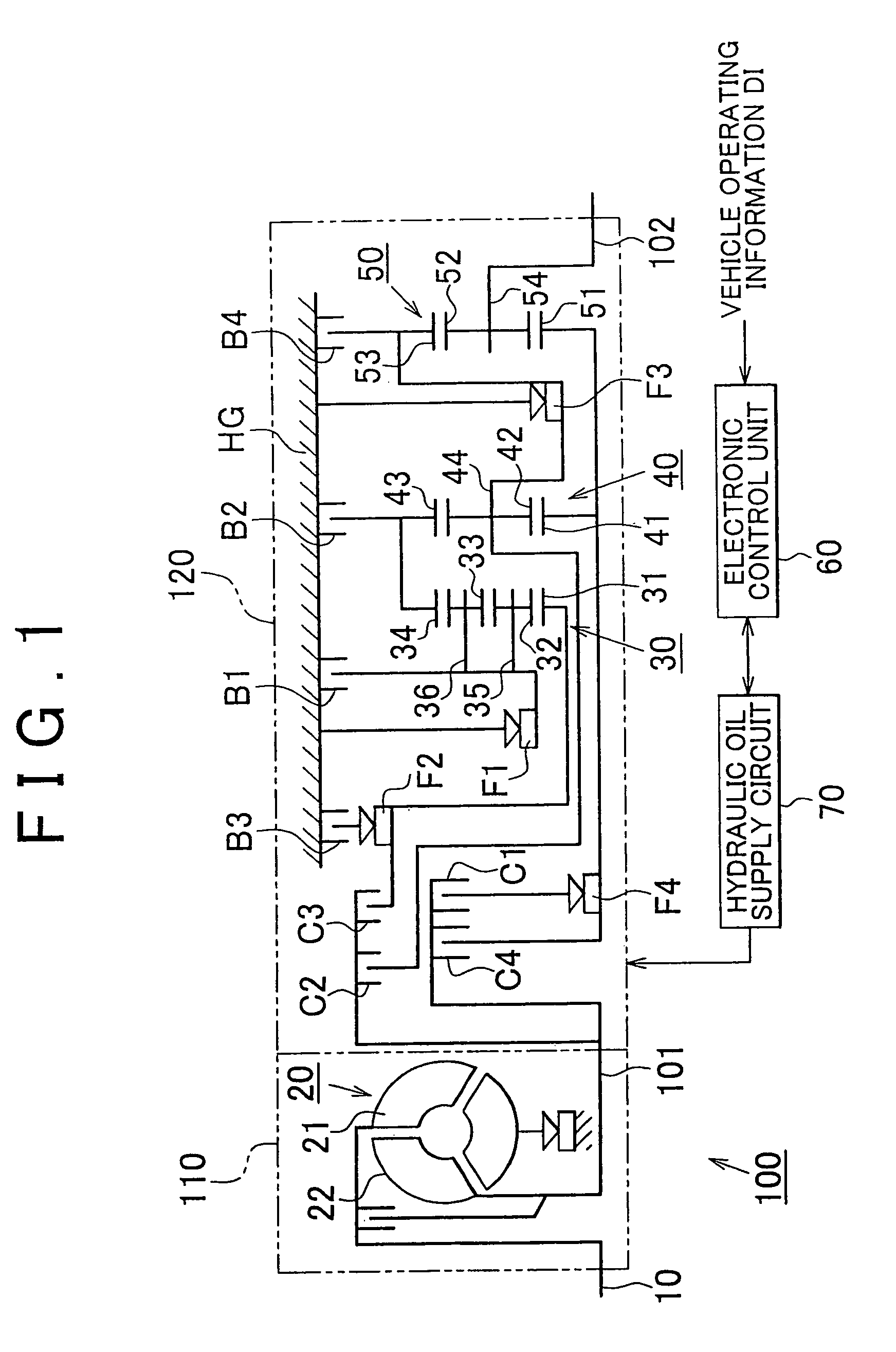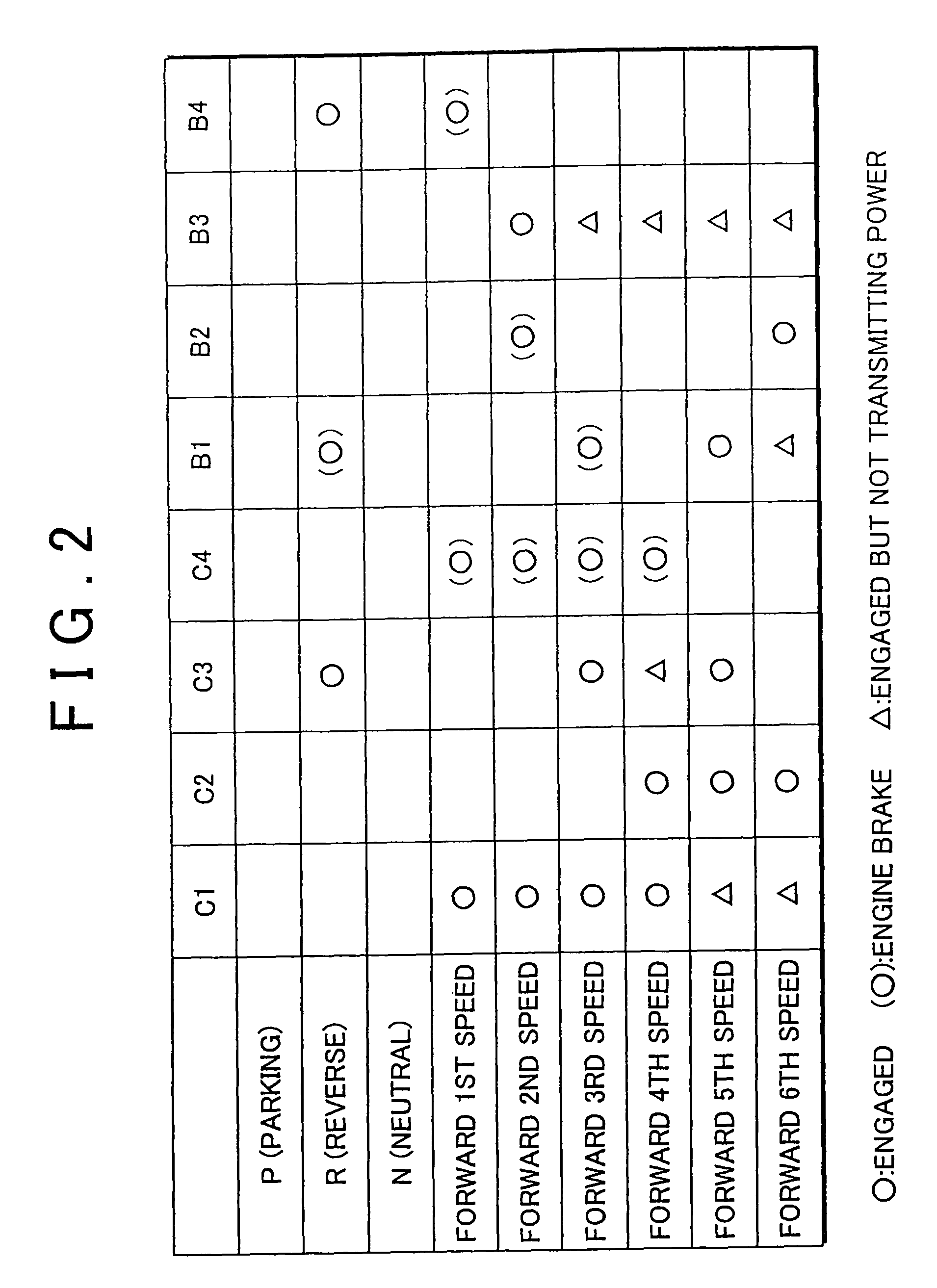Diagnostic system for automatic transmission
a diagnostic system and automatic transmission technology, applied in the direction of mechanical equipment, instruments, transportation and packaging, etc., can solve the problems of inability to release, deterioration of the shifting performance of the automatic transmission, and the diagnostic system still suffers a problem in terms of flexibility or freedom with which to perform fault diagnosis, so as to achieve a high degree of freedom and high reliability
- Summary
- Abstract
- Description
- Claims
- Application Information
AI Technical Summary
Benefits of technology
Problems solved by technology
Method used
Image
Examples
Embodiment Construction
[0032]In the following description and the accompanying drawings, the present invention will be described in more detail with reference to exemplary embodiments.
[0033]Referring to FIG. 1 through FIG. 4, a diagnostic system for an automatic transmission according to one embodiment of the invention will be described in detail. In this embodiment, the invention is applied to a diagnostic system for a forward six-speed automatic transmission installed on a vehicle. As shown in FIG. 1, the automatic transmission 100 consists principally of an input conversion unit 110 connected to a crankshaft 10 of an internal combustion engine as one example of prime mover installed on the vehicle, and a gear train unit 120 connected to driving wheels of the vehicle via a propeller shaft. The input conversion unit 110 includes a torque converter 20. As well known in the art, the torque converter 20 includes a pump impeller 21 coupled to the crankshaft 10, and a turbine runner 22 coupled to an input sha...
PUM
 Login to View More
Login to View More Abstract
Description
Claims
Application Information
 Login to View More
Login to View More - R&D
- Intellectual Property
- Life Sciences
- Materials
- Tech Scout
- Unparalleled Data Quality
- Higher Quality Content
- 60% Fewer Hallucinations
Browse by: Latest US Patents, China's latest patents, Technical Efficacy Thesaurus, Application Domain, Technology Topic, Popular Technical Reports.
© 2025 PatSnap. All rights reserved.Legal|Privacy policy|Modern Slavery Act Transparency Statement|Sitemap|About US| Contact US: help@patsnap.com



